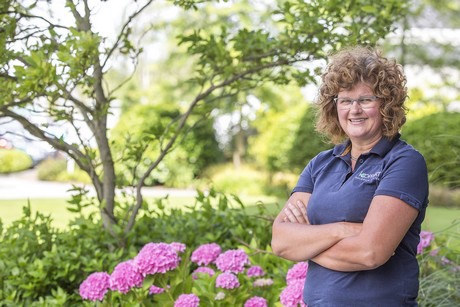Thrips have long been a major threat to crops, but worryingly, the number of species of thrips around the globe is on the increase, and they are spreading more easily. More worryingly though is the fact that there isn’t yet a biological solution to control every species in every crop. Koppert is, therefore, investing in more R&D in this area.
Ornamentals cultivation consultant Jenette Douma cites the situation in the Netherlands as an example, where for many years it was assumed that only the Western flower thrips – Frankliniella occidentalis – was present in crops. It has since become evident – through crop rinsing at Koppert – that other species of thrips are active too. Investigations of leaf samples have instantly shown that infestations can be quite extensive.

‘We have seen species such as the Echinothrips, Thrips setosus, and Dichromothrips corbetti appear. A few years ago, Hydrangea cultivation was particularly affected by Thrips setosus, or Japanese thrips. This species was hardly scouted at all as growers had assumed that they didn’t have it in their crops – it turned out to be quite a nasty surprise when they did find it. Another example is Dichromothrips corbetti which affects Phalaenopsis and is very difficult to get rid of. It had been around for some time but was confused with Echinothrips.’
Biological solutions
The fact that cultivation systems are always changing – new-style cultivation for example – and that pesticides are increasingly restricted are complicating factors. ‘It means that growers have fewer resources with which to intervene. Many pesticides are not particularly selective – they may well kill off thrips, but they also kill off the natural enemies of other pests at the same time. It’s very difficult to slot them into an integrated system while the grower has to increasingly rely on integrated solutions. Unfortunately, such solutions are not immediately available for all species of thrips in all types of crop.’
Developments in the Netherlands are replicated elsewhere. The situation varies between continents and countries, but thrips march on nevertheless – and not only in ornamentals cultivation, where they cause cosmetic damage and lower ornamental value. Thrips have also been found in other industries, including fruit and vegetable cultivation and arable farming.
A strong chain approach
Koppert is, therefore, investing heavily in R&D. In ornamentals cultivation, roses and flowering pot plants such as Hydrangeas and Phalaenopsis are important target crops. Thankfully, crop rinses mean that we can test a wide range of potential strategies much more quickly than in the past.
Koppert is also looking at the role that propagators play. ‘It’s an issue that runs right through the chain,’ explains Jenette Douma. ‘Especially given the increasing volumes of starting material and semi-finished products being moved back and forth between continents and countries. This makes it much easier for species of thrips to spread, and that demands a strong chain approach, the most important aspects of which are good scouting and prevention.’
‘Control of thrips in ornamentals cultivation will need increasingly more biological solutions,’ explains consultant Jenette Douma.
For more information:
Koppert Biological Systems
[email protected]
www.koppert.com
